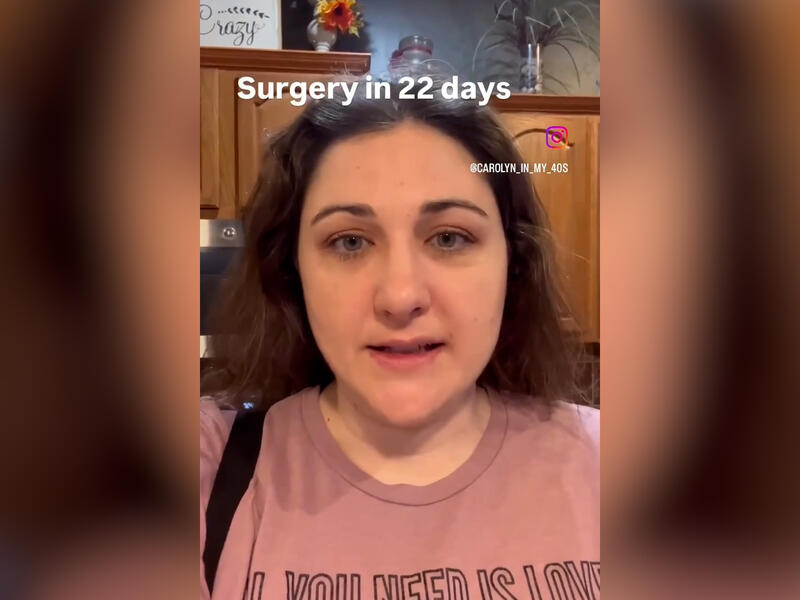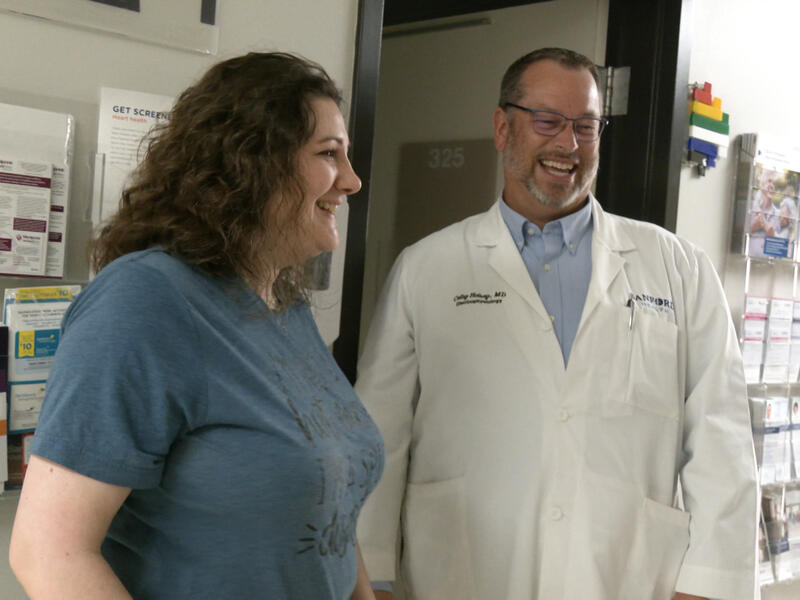A Dickinson day care provider became the first person in North Dakota to have a new defibrillator device implanted, thanks to her team at Sanford Health.
Diagnosing the problem
After she thought she had a heart attack, Carolyn Freer went to the Sanford clinic in her hometown of Dickinson, North Dakota.
“The big event was I had the heart tightness, and it wrapped up around my back and into my jaw and it just took my breath away completely,” Freer said.
Irregular heartbeats on her follow-up EKG tests pointed doctors in the right direction. Then a heart monitoring device called a loop recorder started to measure for arrythmias. That’s when another incident occurred.
“I was just working like normal. I was just walking around and suddenly I had a wave of just, ‘Oh my gosh, I feel like I’m going to pass out,’” said Freer.
Freer was diagnosed with Brugada syndrome.
“It’s a genetic disorder of the heart and how the sodium ion channels are handled in the heart electrical system,” said Colby Halsey, M.D., a cardiac electrophysiologist at Sanford Bismarck. “It predisposes people for having electrical arrhythmias that cause the heart to short circuit and fibrillate and stop beating.
“It’s not really a chest pain syndrome like it would be for coronary disease or heart disease that people are used to. This is more on the realm of passing out and fainting for unexplained causes. Palpitations can be part of it too.”
Lifesaving device
Doctors immediately gave Freer a wearable defibrillator called a LifeVest to safeguard against sudden cardiac arrest. She chronicled using that device on her Instagram account, showing her followers how the device worked, as well as how uncomfortable it could be. That heart treatment was temporary though.

Photo Courtesy of Carolyn Freer
Freer would need an EV ICD device (extravascular implantable cardioverter-defibrillator) implanted near her heart to defend against any future incidents.
“A defibrillator of any type treats Brugada syndrome, because a defibrillator rescues somebody from a sudden cardiac death. That is an electrical storm of the heart, and it has to be reset to start the normal cadence so the heart can beat normally again.”
Because Freer is in her early 40s, the decision was made to put in a new Medtronic EV ICD device which can last up to 11 years.
“My biggest concern when we were talking about that is how many times I’m going to have to have it replaced because every so many years you have to go in and have the same surgery again because they have to replace the battery in it,” Freer said.
Dr. Halsey trained specifically on this new device for Freer’s procedure, as well as any future patients who may need it in Bismarck.
“We’re hoping for Carolyn that this goes in and it’s like homeowners’ insurance. You never have to use it,” Dr. Halsey said.
If she does need it though, it will be a literal lifesaver.
“I can actually now relax,” Freer said. “If I do pass out, I know that I have a backup, that I’ll instantly be shocked back into being awake.”
She is the first in her state to have this new device, but Carolyn Freer will likely not be the last. Her Brugada syndrome — and Dr. Halsey’s expertise—have opened the door for others in the region to use it as well.
Learn more
- What does a heart attack feel like?
- You can start preventing heart disease at any age
- Heart screening saves life of 59-year-old farmer-mechanic
…

